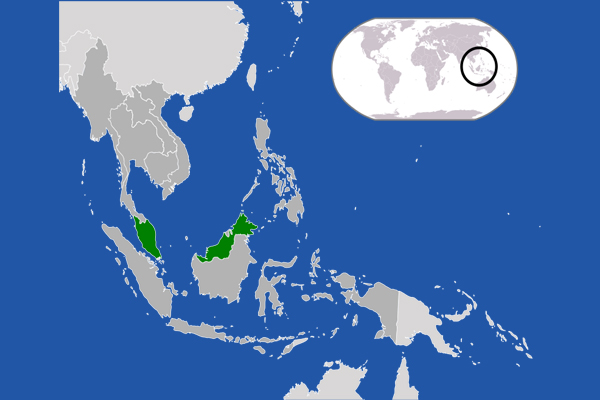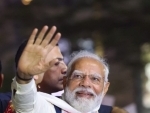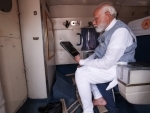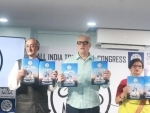
Redrawing Battle Lines in the Northeast
According to the President, the signing will be followed by the formation of a Joint Ceasefire Monitoring Committee to prevent armed clashes and a Union Peace Dialogue Joint Committee to facilitate political dialogue. A political framework is to be drawn up within 60 days after the formal NCA signing and the political dialogue is to start within 90 days.
India hailed the signing of NCA, which was witnessed by National Security Advisor Ajit Doval, Chairman of Joint Intelligence Committee (JIC) and interlocutor for Naga peace talks R.N. Ravi and former Chief Minister of Mizoram Zoramthanga. Zoramthanga had been involved in the peace deal and had travelled earlier to Myanmar and Thailand where he held talks with both Myanmarese rebel groups and the Government as a mediator.
At least three groups active along the Indo-Myanmar border - the Kachin Independence Organisation (KIO), Chin National Front (CNF) and Khaplang faction of the National Socialist Council of Nagaland (NSCN-K) - were part of the peace negotiations ahead of signing of NCA. While CNF signed up, KIO and NSCN-K walked out. NSCN-K had taken the decision not be part of the NCA in a party conference held on September 21 at its headquarters, where NSCN-K 'chairman' S.S Khaplang and other central committee members were present. Later, in an interview with Independent Mon News Agency (report published on September 24) U Kyaw Sein, an NSCN-K central committee member said, "We already discussed the topic with our chairman. The chairman said we aren't ready to sign the NCA yet. And, there are some political issues in our group. We cannot find a solution for this by just signing the NCA. The government side also cannot solve this problem. So, we decided not to participate in the NCA inking." He did not reveal what these political problems were, though he added, "It is not that we will revolt against the Burmese Government because we do not sign the NCA". Though NSCN-K is not a signatory to the Agreement, from India's internal security perspective the NCA can be very significant as Myanmar still remains a safe haven for a host of militant outfits active in India's north-east. Erstwhile safe havens in Bhutan and Bangladesh have now become extremely difficult.
NSCN-K was in ceasefire agreement with Government of India since April 28, 2001, till March 27, 2015 when it unilaterally pulled out of the truce and attacked the Indian Army in Chandel District on June 4, 2015, causing the death of 18 Army personnel and injuring another 11 soldiers. Significantly, NSCN-K had also entered into a ceasefire agreement with Myanmar on April 9, 2012, which allowed it elbow room to maintain peace with Myanmar while stepping up violence in its area of operation in India. This made things difficult for India, as Myanmar lacked a legal framework to take action against it, even if Indian diplomatic efforts could convince Myanmar to take punitive action against NSCN-K. There is a possibility now that things may change.
With the signing of NCA and NSCN-K's exclusion, the group's earlier ceasefire with Myanmar is in danger of being derecognized. In fact, U Kyaw Sein in the interview toIndependent Mon News Agency had acknowledged that, at a meeting with the Government at Myanmar Peace Center on September 16, 2015, officials told the NSCN-K that if it did not participate in the NCA signing, the group would be included in the unlawful groups list.
Significantly, following NSCN-K's refusal to be part of the NCA, Myanmar troops have launched punitive operations against the outfit's facilities in Myanmar Naga Hills (MNH). Two major bases at Ponyu and Langhting were set afire and a few weapons seized, driving cadres into forest and mountain hideouts. Myanmar now has the legal cover to act against NSCN-K, as and when it decides to do so. Further, after resolving a majority of conflicts in the country, Myanmar can effectively turn the heat on the remaining insurgent outfits outside the NCA. It is, however, likely to take significant diplomatic efforts to convince Myanmar to act effectively and in a sustained manner against the anti-India groups.
Meanwhile, as the NCA was being signed in Myanmar, Paresh Baruah, 'commander-in-chief' of the United Liberation Front of Asom - Independent (ULFA-I) spoke to The Assam Tribune over phone from an undisclosed location and claimed that the United National Liberation Front of Western South East Asia (UNLFWSEA) would enhance its strength by incorporating another nine militant outfits in its fold. The UNLFWSEA was formed on April 17, 2015, by four active militant groups of the Northeast region - NSCN-K, ULFA-I; the IK Songbijit faction of the National Democratic Front of Bodoland (NDFB-IKS); and Kamtapur Liberation Organisation (KLO) - with the aim of setting up a 'northeast government-in-exile', reportedly to be based in Myanmar. S.S. Khaplang, the NSCN-K 'chief' is chairman of this new front, UNLFWSEA.
Paresh Baruah claimed that two Meghalaya-based outfits - Garo National Liberation Army (GNLA) and Hynniewtrep National Liberation Council (HNLC) - have already expressed their desire to join the common platform. He added that the formal process of these outfits joining the new grouping may be completed within the current year. Further, the Coordination Committee (CorCom), a common platform of seven militant groups of Manipur, is likely to join the new front. Baruah claimed that six member outfits of CorCom were ready to join UNLFWSEA immediately, "But we want the entire CorCom to join us. They have some problem with one of the constituents and we are hoping that they can settle their problems soon so that the entire CorCom can join us. We are expecting that the seven outfits of Manipur will be joining hands with us within this year." Baruah also claimed that one insurgent group from Tripura would also be joining the front 'soon'.
While the developments in Myanmar can be seen as an opportunity to put increased pressure on the militant formations in India's Northeast, UNLFW is seeking out ways to withstand that pressure and keep the situation boiling at a time when a 'historic accord' has been signed between the Government of India and the largest rebel Naga group, the National Socialist Council of Nagalim - Isak Muivah (NSCN-IM) on August 3, 2015, raising hopes of a larger peace in the Northeast.
According to South Asia Terrorism Portal database there has been a sustained decline in insurgent violence in India's Northeast over the years, with occasional spikes in certain theatres. As of October 25, 2015, the Northeast as whole recorded a total of 236 fatalities, including 52 civilians, 46 Security Force (SF) personnel and 138 militants, while the figure for the corresponding period in 2014 saw a total of 333 fatalities including 145 civilians, 17 SF personnel and 171 militants. Significantly, however, though more than two months remain in the current year, SF fatalities have already doubled in comparison to the whole of 2014. In fact, one thing stands out in the fatalities data for the Northeast: SF fatalities had not crossed 40 since 2008, but have already touched 46 in 2015 (as of October 25).
Support Our Journalism
We cannot do without you.. your contribution supports unbiased journalism
IBNS is not driven by any ism- not wokeism, not racism, not skewed secularism, not hyper right-wing or left liberal ideals, nor by any hardline religious beliefs or hyper nationalism. We want to serve you good old objective news, as they are. We do not judge or preach. We let people decide for themselves. We only try to present factual and well-sourced news.







